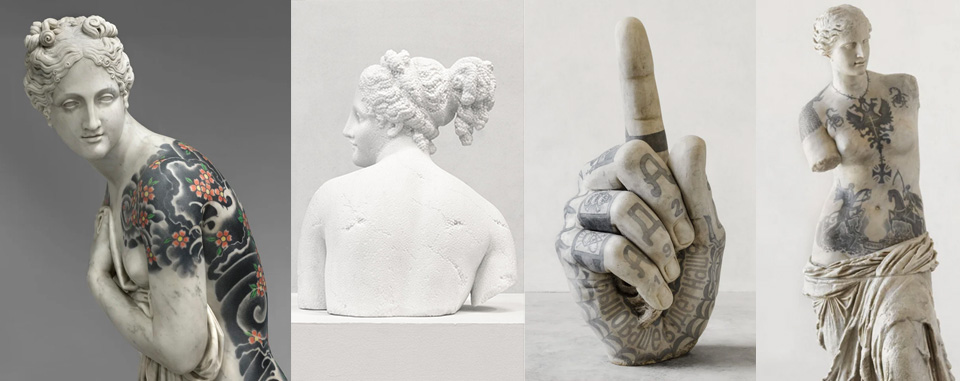Ipso Fabulous
The rise of Brutalist architecture

Oh Brutalism… how I love you so.
From the mid-20th century, the Brutalist architecture style rose in popularity before reaching its peak in the mid-1970s, when it came crashing down as a model of bad taste. But now it looks like there is a renewed interest and appreciation for this once derided architectural style.
Known for its use of functional reinforced concrete, steel, and modular elements, Brutalist buildings have a graphic quality that is part of what makes them so appealing now. The word Brutalist doesn’t come from the architecture’s fortress-like stature, but from the raw concrete its often made from — béton brut.
Want to learn more? Go HERE and read the full story on My Modern Met.
On the edge of impossible

On the edge of impossible lies brilliance.
Photo by William Duggan on Unsplash
Think “Michelangelo” but with tattoos

For your daily inspiration: Italian sculptor Fabio Viale works in marble to make it look like styrofoam. He also recreates famous classic Italian sculptures (think Michelangelo’s David or Pieta) and adds tattoos. His tattooed marble sculptures are not colored on the surface — not painted over — the ink infiltrates the marble in a very similar way that tattoos penetrate human skin.
You can’t say you can’t play

There is a lot to learn from this great little post by Seth Godin:
Lenny Levine was a great kindergarten teacher. And he ran his class by this one rule.
It means that if another kid comes along, you need to include them in your game.
That’s it.
It changes everything. It puts an emphasis on connection, not exclusivity. It changes the dynamics of belonging. It weaves together a foundation that crosses traditional boundaries.
It’s a bit like giving every kid in the class a valentine’s day card. Some say that it cheapens the sentiment because it’s not about selection, it’s about inclusion. I think we’ve got plenty of selection already.
Photo by BBC Creative on Unsplash
Confusing hunger and thirst

Great insight from the ever brilliant Seth Godin:
If you find yourself stranded in the desert with nothing but an endless supply of chips, you’re going to die within a week.
The same thing could happen to you if you had nothing but water to live on. Hunger and thirst are similar, easily confused but very different.
Our culture of corporate consumption tries to persuade us that being hungry is all we need. Hungry to earn more, buy more, save more, spend more. It celebrates the hustler who doesn’t know how to stop, asserting that this person is getting all the fancy prizes because they’re contributing so much. Status is awarded to the unsated hungry person.
But they might still be thirsty. Thirsty for meaning and connection. Thirsty for the satisfaction of creating beauty. More hustle won’t satisfy those needs.
Photo by Dan Grinwis
Pile of good things

So, what if, instead of thinking about solving your whole life, you just think about adding additional good things. One at a time. Just let your pile of good things grow.
